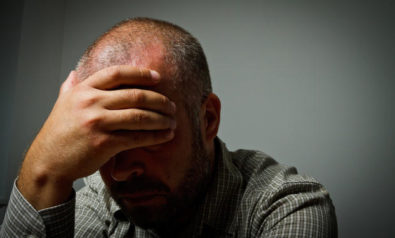Shirley Jülich explains the complexity of the Stockholm Syndrome in sex abuse victims.
From time to time it is reported that yet another person, usually a young woman, has been held hostage as a sex slave for a lengthy period. There have been the recent events in Ohio, with Amanda Berry, Gina DeJesus and Michelle Knight. Before them, the media reported about Jaycee Lee Dugard of California, Natascha Kampusch of Austria, and Elizabeth Smart of Utah. While we do not know all the facts of the case in Ohio, it is known that in the other cases, victims had the opportunity to leave or to ask someone for help in the later stages of their captivity. They did not, and this puzzles the public.
Why do hostages find it so difficult to leave? The answer is simple – Stockholm Syndrome, a survival technique that enables a hostage to survive. It is also a technique that victims of sex trafficking use to survive. There is an established body of literature documenting the contradictory relationship that develops between hostages and hostage-takers. This phenomenon is usually referred to as the Stockholm Syndrome; although it is sometimes known as the Hostage Identification Syndrome, Survival Identification Syndrome, or traumatic bonding.
The term, “Stockholm Syndrome,” was initially used in 1973 to describe what was considered as unusual reactions of four bank employees, three women and one man, who had been held hostage by two ex-convicts during a bank raid in Stockholm, Sweden. Over their six days of captivity, the hostages developed an emotional bond with the hostage-takers to the extent that they not only identified with the hostage-takers, but came to view the police as the enemy and subsequently attempted to protect the hostage-takers from the police. The relationship between the hostages and hostage-takers did not stop at the end of the siege, but carried on for years after the actual event. In their work on Stockholm Syndrome, Dee Graham and her colleagues investigated the syndrome and argued that bonding between an abuser and a victim occurred when four pre-cursors were co-existent. Victims of sex trafficking – those who have become involved in the sex trade voluntarily and those who have been tricked or coerced – are subjected to these very same conditions.
Perceived Threat to Survival
For most victims of sex trafficking, there is a clear and direct threat to their physical survival and the belief that the abuser is willing to carry out that threat. For others it might be more subtle. Emotional abuse, or the threat of harm, is a threat to physical survival. There might not be any threat to survival at the beginning of the relationship, but once the victim is bonded to the abuser and it is too late to escape, the victim will feel a very real threat to his or her survival. Victims are dependent on the abuser, no matter what their circumstances. They are very aware that they cannot survive without the protection and support of the abuser. Some victims might experience threats to their family and believe they are responsible for the safety of others around them. Some might not be threatened so explicitly but they might believe that if they ask for help or attempt to escape, they or their families could be in danger.
Perception of Kindness
People who are threatened understand kindness quite differently to those whose survival is not threatened. Victims are ashamed they are in these situations and so their self-esteem is very low. They might think they are responsible. Perceptions of kindness – even in the smallest form — can take on disproportionate understandings. Many victims believe that the abuser loves them and this is perceived as kindness; as is often the case between a pimp and the prostitute he or she controls. If victims are subjected to physical or sexual violence, its cessation is interpreted as kindness. Some victims might minimize what has happened to them and make such comments as: “At least he didn’t…,” “…hurt my family,” “it wasn’t that bad” or “it could have been worse.” In some instances, victims are just thankful to be alive. All victims of sexual trafficking over time are likely to misunderstand many small acts as a demonstration of kindness.
Isolation
When people are held hostage, they are physically isolated from other people and so from perspectives other than those of the abuser. Victims of sex trafficking are not isolated from others. The isolation they experience is not so obvious. An outsider, a person who has not been subjected to the same dynamics as the victim, is likely to be unable to understand why victims just don’t run away or ask for help. From their perspective, the victim maintains contact with others around them.
However, the emotional and psychological isolation that victims experience is profound. Survivors of child sexual abuse reported that abusers used a variety of strategies to discourage their disclosure, such as threats of violence against themselves and their families. Victims come to believe that they have no one else to blame but themselves. They think no one will believe them. They think they deserve what is happening to them and they are ashamed. So victims of sexual trafficking become psychologically isolated from the perspectives of those who have not been subjected to these complex dynamics. They only know the perspective of the abuser. This sense of isolation can be extremely difficult to break down.
Perceived Inability to Escape
If hostages are physically isolated from others, they obviously have limited opportunities, if any, to escape. Abusers typically use violence to control victims. But in the case of sexual trafficking, victims do not have access to their personal identification documents – these are held by the abuser. Neither do they have access to money.
So, if they do escape, they cannot go far. There may be no family members nearby to help them. It might be that these people, the very ones who should have protected them, failed to do so for whatever reason. Some victims will have seen what has happened to others if they try to escape. There will be other people, bystanders, who know what is happening, but do nothing. They do nothing, perhaps because they are receiving some sort of positive benefits from sex trafficking, or because they too are subjected to the same sorts of dynamics to which the victim has been subjected. They might be powerless, and unable to act.
Victims of sex trafficking will interpret this as further proof that they cannot escape. For these victims, it is not merely a perception that they are unable to escape: it is their reality.
Exposure to these four conditions explains why victims of sexual trafficking cannot escape as easily as outsiders might expect. Those who understand the phenomenon of Stockholm Syndrome, such as Graham, would expect the development of a relationship as I described in my research with survivors of child sexual abuse.
The abuser threatens the victim’s survival, who, unable to escape and isolated from others, turns to the abuser for protection. The need for protection, combined with the will to survive, drives victims to actively search for expressions of kindness, empathy or affection by the abuser. The victim suppresses any feelings of danger, terror or rage and, through this denial, is able to bond to the positive side of the abuse. So that they can survive, the victim becomes both hypervigilant and hypersensitive to the abuser’s needs, feelings and perspectives, suppressing their own needs. To effectively anticipate the needs of the abuser, the victim views the world through the perspective of the abuser and this translates into positive feelings for the abuser. The harder victims must work to meet the needs of the abuser, the stronger their bond is to the abuser. Victims come to view any would-be rescuers, such as parents, police, therapists or friends, as the “bad guys,” because that is the abuser’s perspective. The abuser becomes the “good guy” and victims eventually come to believe that they deserve the abuse or are somehow responsible.
Events identified as “acts of god,” such as natural disasters, earthquakes and the like, provoke sympathy and empathy for the victim. This response is not always the same for trauma caused by people. Bystanders, those working in the industry or receiving services from it, tend to benefit from sexual trafficking; they are unlikely to sympathize or empathize. They will do nothing — they will look the other way.
Outsiders, on the other hand, have not been subjected to the complex dynamics of Stockholm Syndrome. Their perception is distorted by a need to believe that they would act differently if they found themselves in a similar situation. While this can be understood as a coping mechanism, unfortunately it serves to minimize the realities of victims. This is further encouraged by the actions of the abuser, as he or she undermines the credibility of the victim by using a range of sophisticated arguments and rationalizations. The more powerful the abuser, the more influential he or she is, and the more readily he or she can define reality. Devalued members of society – children and women – will likely learn that their realities occur outside of socially validated parameters.
Some writers on Stockholm Syndrome support the idea that this syndrome develops over a lengthy period of time, while others argue that it can develop very quickly. If we took the time to examine our own reactions in different situations, we might be surprised to discover that we tend to want to develop a bond with — or accommodate — the person we find the most threatening. We try to personalize ourselves to the abuser, encourage him or her to see us as human beings with names, lives and families, and we do as we are told in the hope that we might survive.
Stockholm Syndrome, Hostage Identification Syndrome, Survival Identification Syndrome, traumatic bonding or any other name it might be given, is a natural survival technique that we all use to enable our survival. So too do victims of sexual trafficking.
The views expressed in this article are the author's own and do not necessarily reflect Fair Observer’s editorial policy.
Image: Copyright © Shutterstock. All Rights Reserved.
Support Fair Observer
We rely on your support for our independence, diversity and quality.
For more than 10 years, Fair Observer has been free, fair and independent. No billionaire owns us, no advertisers control us. We are a reader-supported nonprofit. Unlike many other publications, we keep our content free for readers regardless of where they live or whether they can afford to pay. We have no paywalls and no ads.
In the post-truth era of fake news, echo chambers and filter bubbles, we publish a plurality of perspectives from around the world. Anyone can publish with us, but everyone goes through a rigorous editorial process. So, you get fact-checked, well-reasoned content instead of noise.
We publish 2,500+ voices from 90+ countries. We also conduct education and training programs
on subjects ranging from digital media and journalism to writing and critical thinking. This
doesn’t come cheap. Servers, editors, trainers and web developers cost
money.
Please consider supporting us on a regular basis as a recurring donor or a
sustaining member.
Will you support FO’s journalism?
We rely on your support for our independence, diversity and quality.











Comment